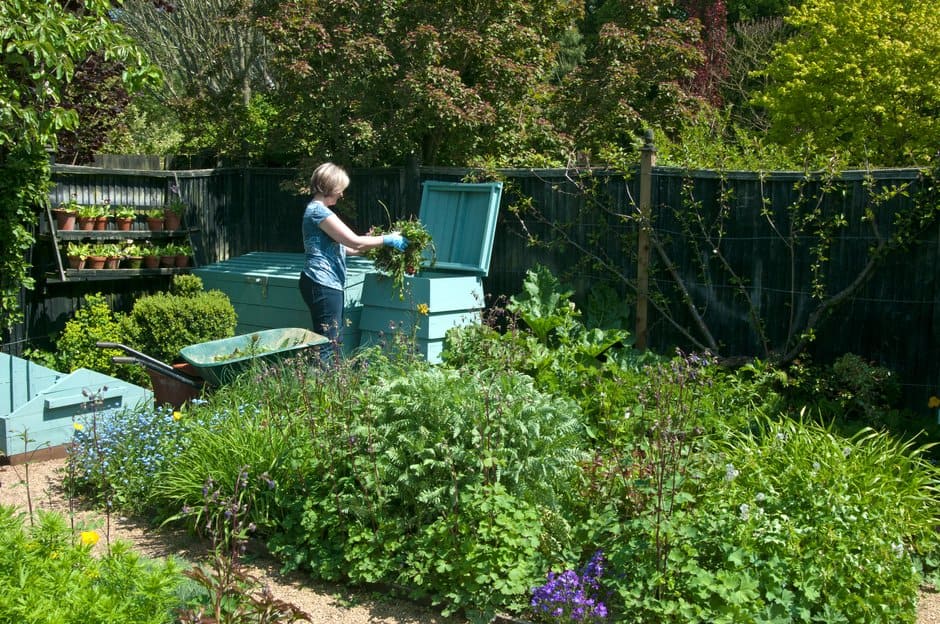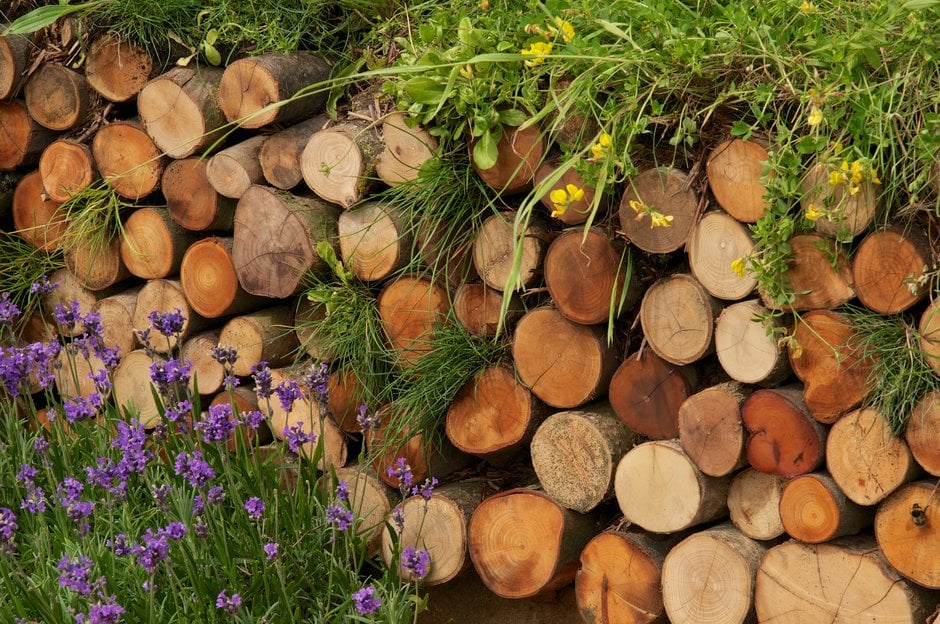Composting
Recycling your garden waste into home-made compost is both easy and environmentally friendly. Here we look at the basics of making this valuable soil improver and mulch.

Quick facts
- Use ‘green’ waste such as annual weeds, veg peelings and leafy debris
- Add ‘brown’ waste, such as shredded woody prunings and cardboard
- Compost bins can be small or large, to suit your space and amount of waste
- Choose a sheltered, shady spot for your compost bin, ideally directly on the soil
Jump to
Why make compost
Although these can all be recycled in council waste collections too, it makes sense to reap the benefits yourself by turning them into
When spread over the soil surface or lightly forked in, home-made compost adds valuable organic matter that improves the soil’s structure, aeration and biodiversity. It can boost moisture retention in fast-draining sandy soils and aid drainage in heavy clay soils. Used as a mulch, it helps to hold moisture in the soil and slow down evaporation in summer.
Garden compost can also be used to make potting compost, when combined with other ingredients such as soil – see our guide to making your own potting compost.
Although it is possible to make compost just by piling up garden waste in a heap, it’s more efficient and space-saving to use a bin. You can build your own from wooden pallets or recycled planks, or buy a purpose-made bin. These are available in a wide range of shapes, sizes and styles, from compact and durable ‘Dalek’ bins to attractive wooden beehive shapes, and even rotating tumblers. There are options to suit all sizes and styles of garden.
It’s only in the very smallest gardens where you might find it hard to squeeze in a compost bin or generate enough material to fill it, in which case you could consider worm composting instead.

Dead wood and compost heap habitats

10 steps to sustainable gardening

Low-carbon gardening
Setting up a compost bin
Choose a compost bin to suit the amount of space you have available and the quantity of waste your garden produces. For beginners and those with a small garden, a compact plastic bin is often a good choice. Larger gardens and allotments may be able to fill a large wooden compost ‘bay’, such as those made from pallets. Keen composters may prefer several in a row, to hold compost at different stages of readiness. Bins of less than 1 cubic m (1.3 cubic yd) are generally less efficient than larger ones, but will still make compost successfully, although less rapidly.
The best location for a compost bin is a sheltered spot in partial or full shade, to avoid extremes of temperature and moisture. The micro-organisms (bacteria and fungi) that convert the waste into compost work best in constant conditions. So if you have an under-used shady corner in your garden, a compost bin will turn it into a productive hub. Just make sure you can get to the bin easily, otherwise you won’t use it regularly.
Standing the bin on an earth base provides good access for soil organisms and allows easy drainage. But a hard surface is fine too – just add a few spadefuls of soil to get it off to a good start.
How to compost
-
Green – this is usually soft, leafy material, including grass clippings, sappy green plants (such as annual weeds), crop waste, old fruit and vegetables and kitchen peelings. These materials are rich in nitrogen
-
Brown – mainly dry woody waste, such as prunings and hedge-trimmings (shredded, chipped or chopped up), and other dried materials such as dead stems and straw, as well as torn-up or shredded paper and cardboard. These are rich in carbon
The bacteria and micro-organisms that produce the compost work best when the balance of green and brown materials is correct. As a rough guide:
-
25–50 per cent should be soft leafy green material
-
the other 75–50 per cent should be chopped-up woody, brown material
Avoid letting any one material dominate – especially grass clippings, as these can become a slimy, smelly mess on their own. Grass clippings are best mixed with brown material when you add them to the bin. If you don’t have enough, pile the clippings up beside the bin until you have sufficient brown material to make a balanced mix.
Chop up or shred any long stems or prunings before adding them, as well as any paper or cardboard, to help them break down more successfully.
There’s usually no need to add extra ingredients or products to improve the composting process. Lime (which raises the pH) is often recommended, but provides no benefit. There are also products, variously called compost accelerators, activators or starters, that claim to speed up composting, but the process will generally run smoothly without them if you ensure a good balance of green and brown ingredients and sufficient aeration.
Also see our composting guides:
Woody waste: shredding and composting

How to compost

Introduction to composting

Making compost
Turning your compost
If possible, turn your compost several times a year. This will speed up composting and help ensure all the ingredients get broken down. However, it can be hard work, so if you can’t manage it, don’t despair – as long as the ingredients are well balanced and speed isn’t a priority, then composting will usually happen naturally. However, if you’re getting poor results, turning should improve things.
There are various ways to turn compost – the most thorough being to empty the bin then refill it, or to move the contents from one bin to another. But both of these take space and can be difficult. Another option is simply to fork through or stir the contents every few months, introducing air and mixing the different ingredients to the best of your ability.
When is compost ready to use?
Mature compost is dark brown, with a crumbly, soil-like texture and should smell like damp woodland. It’s unlikely that all the material will turn out like this, but any uncomposted bits can be added back into the next batch of composting material.
Home-made compost is ideal for use as a mulch or soil improver, spread in a layer at least 5cm (2in) thick over the surface of the soil. It helps to deter weed germination and hold in moisture. It will be gradually incorporated into the soil by worms, where it will improve the soil structure and boost the natural biodiversity. It can also be combined with other ingredients to make potting compost. See our guides for more details:

How to make your own potting mix

How to mulch with organic matter

Mulches and mulching
Organic matter: how to use in the garden
Problem solving
-
Wet, slimy, smelly compost – this may be caused by too little air and too much water. Cover the compost to protect against rain and add more brown waste, such as chopped woody material, woodchip, straw or shredded paper. Avoid adding too many grass clippings in one go – mix them with plenty of brown material instead
-
Dry and fibrous with little decomposition – this is usually caused by too little moisture and too much brown material. Water the compost in summer if it looks dry, and mix in more green waste. In addition, for every 15cm (6in) layer of compost, you could add either: one bucket of fresh manure, or 270g (9oz) of blood, fish and bonemeal, or 140g (5oz) of sulphate of ammonia
-
Flies – a well-run compost bin won’t produce swarms of flies, but if they do appear, cover any kitchen waste with garden waste and check that the contents aren’t too damp, which can lead to insufficient aeration
Get involved
The Royal Horticultural Society is the UK’s leading gardening charity. We aim to enrich everyone’s life through plants, and make the UK a greener and more beautiful place.